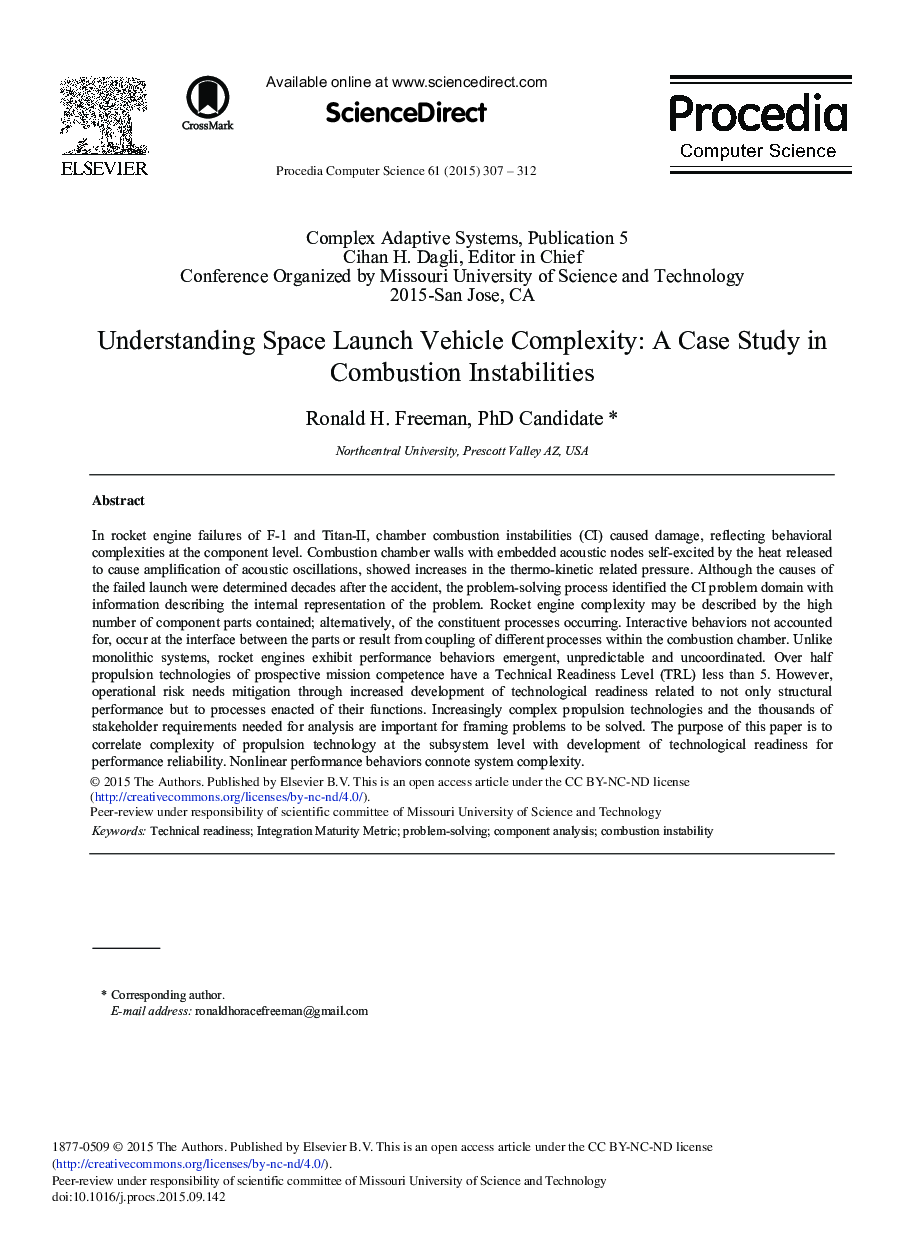| Article ID | Journal | Published Year | Pages | File Type |
|---|---|---|---|---|
| 484671 | Procedia Computer Science | 2015 | 6 Pages |
In rocket engine failures of F-1 and Titan-II, chamber combustion instabilities (CI) caused damage, reflecting behavioral complexities at the component level. Combustion chamber walls with embedded acoustic nodes self-excited by the heat released to cause amplification of acoustic oscillations, showed increases in the thermo-kinetic related pressure. Although the causes of the failed launch were determined decades after the accident, the problem-solving process identified the CI problem domain with information describing the internal representation of the problem. Rocket engine complexity may be described by the high number of component parts contained; alternatively, of the constituent processes occurring. Interactive behaviors not accounted for, occur at the interface between the parts or result from coupling of different processes within the combustion chamber. Unlike monolithic systems, rocket engines exhibit performance behaviors emergent, unpredictable and uncoordinated. Over half propulsion technologies of prospective mission competence have a Technical Readiness Level (TRL) less than 5. However, operational risk needs mitigation through increased development of technological readiness related to not only structural performance but to processes enacted of their functions. Increasingly complex propulsion technologies and the thousands of stakeholder requirements needed for analysis are important for framing problems to be solved. The purpose of this paper is to correlate complexity of propulsion technology at the subsystem level with development of technological readiness for performance reliability. Nonlinear performance behaviors connote system complexity.
